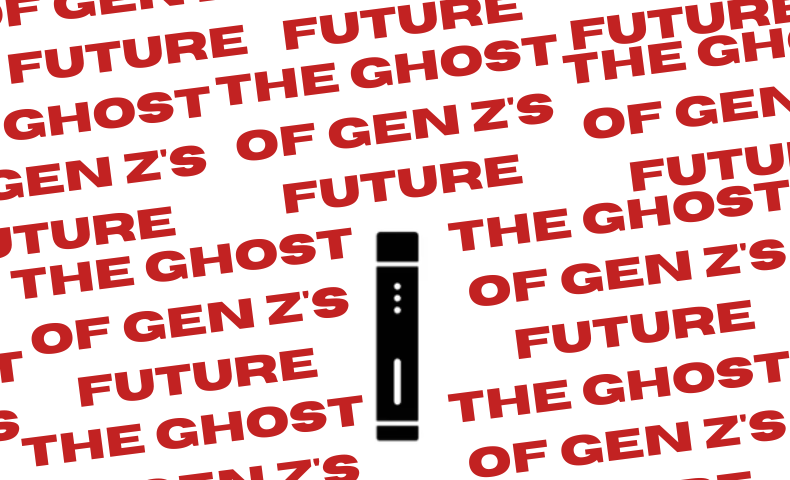Every generation eventually faces the consequences that catch up with it: the Silent Generation with doctor-endorsed cigarettes and lead-based paint; Baby Boomers with tanning and asbestos exposure; Gen X with sedentary office work, fast food, and opioid overprescription; and Millennials with chronic screen use and the normalization of high-energy stimulants, dangers that are only now beginning to surface. But the pain of these past lives is raising questions about what will hurt Generation Z in an age of partisanship, division, and technology.
THC is the main psychoactive compound in cannabis, the chemical that creates the plant’s “high.” It affects areas of the brain tied to pleasure, memory, and coordination, which is why it can alter mood, perception, and reaction time. For Gen Z, products containing THC (vape pens, edibles, and oils) have become more common and potent than in past decades. Around 3 years ago, in 2022, Fulcrum became a popular content creator that revolutionized the weed content world. His abrupt success was attributed to a string of filmed “getting faded in public” stunts and a handful of unforgettable catchphrases like “faded than a ho” which turned him into a casual image of THC use online. He heavily amplified a larger trend of weed use that only fueled the fire in the coming years. Now it’s more present than ever. While many see it as harmless or even therapeutic, public-health experts caution that heavy or especially early THC use can interfere with brain development, mental health, and motivation.
It’s moved from fringe to mainstream. Widespread legalization, accessible dispensaries, social-media normalization, and a booming market for high-potency have turned cannabis into a lifestyle product that has increased early and frequent use among young people. 2022 was the first year in which daily cannabis use was more common than daily alcohol use, according to a Carnegie Mellon University study, and past-year use among adults aged 19 to 30 and 35 to 50 reached all-time highs in recent surveys from the National Institutes of Health. That’s not to say that its negative effects haven’t been wildly overstated to justify punishment, or that alcohol is better, but there are so many misconceptions about weed.
There are narratives that weed isn’t addictive, and for most people, that’s the truth. About 2 in 10 users develop a cannabis use disorder, or CUD. Kurgesagt, an educational YouTube channel, outlines three major risk factors in a video: 1) The amount of THC, 2) How often you consume and 3) Your age when you start using cannabis.
The more THC, and the more often and younger you are when you start, the higher the risk. Even professional educators struggle with research, as there is fierce debate among researchers about how bad weed actually is for the brain, and whether it has long-term consequences. This absence of definitive evidence is hard, but where most can agree is that weed can be really bad for teenagers in many different ways. Teens who use cannabis often are much more likely to become addicted. This is still speculation, but heavy weed users are more likely to perform poorly in school and less likely to finish their education, and there is strong evidence that teen users are way more likely to develop mental health issues like psychosis, schizophrenia, depression, or anxiety later in life.
Phones are yet another new addiction being thrown into the ring, to the point where the Internet has become integrated into many kids’ lives. With Gen Z becoming one of the last generations to have analog childhood photos, it’s getting harder for children to imagine what the world was like before advanced electronics.
The growing fear of technology has been manifested through the culture of Gen Z’s parents, with movies like Terminator and WarGames, dystopian TV episodes, and constant warnings in the news about screen addiction and online predators. For Gen Z, that fear arrived alongside immersion. Childhoods are recorded, curated, and stored in clouds. Gen Z is one of the first generations to have friendships forged in apps, identities performed and policed on platforms. That intimacy creates a certain fluency with the online world, but it also brings new vulnerabilities, like constant surveillance and the attention economy, where the user becomes the product.
Technology used to be something bigger than humanity, a threat to creativity, to originality. For this generation’s children, that fear is now characterized by AI, systems that can mimic human judgment. This replacement might be indicative of the future of AI, as technology becomes a tool for humanity’s advancement.
For many young people today, school is less of a sequence of classes than a year-round audition. The scramble for résumé-building courses, and ever longer application lists has made the joy of adolescence into a high-stakes pipeline. Doing well grade-wise no longer opens as many doors as it used to, and that pressure is present in both behavior and numbers.
About 40% of high-school students reported persistent feelings of sadness or hopelessness, and roughly 20% said they had considered suicide. These are huge, population-level signals that something in teen life has changed, and many researchers are attributing these sustained elevations to academic intensity. Participation in Advanced Placement coursework and exams has steadily increased over the last decade, there is a rising use of counseling and mental-health services on college campuses, and first-year applicants are submitting more applications on average, feeding into a more competitive and stressful environment.
But it’s not all dread. Fitness and gym culture is growing, and Gen Z is playing a vital role in that growth. The U.S. industry reached record membership totals in recent years. Young adults now account for the majority of gym users, and Gen Z often cites mental health benefits as strongly as physical fitness when they join. Those patterns mean a generation that values routine, community exercise, and recovery services, all protective against chronic disease as they age.
Gen Z is both more stressed and more willing to seek help. Surveys and studies show higher reported rates of anxiety and depression, and higher reported likelihood to access therapy or counseling. There’s an evident cultural shift towards treatment and destigmatization that could improve lifetime health outcomes if access keeps its pace. Digital access can help facilitate this, with wellness and monitoring technology as close as a mouse click away.
It’s easy to look forward and worry about the future, but it’s also crucial to recognize what’s different here. Each generation has its vices, its blind spots, and its ghosts, but Gen Z has something unprecedented: a deeper awareness. They grew with information at their fingertips, therapy in their vocabulary, and a sense that progress and pain can come together. The same networks that amplify our anxiety can also spread empathy. The same technology that blurs reality can build connections. Maybe Gen Z’s challenge isn’t to outrun the ghosts of the past, but to learn how to live with them.


